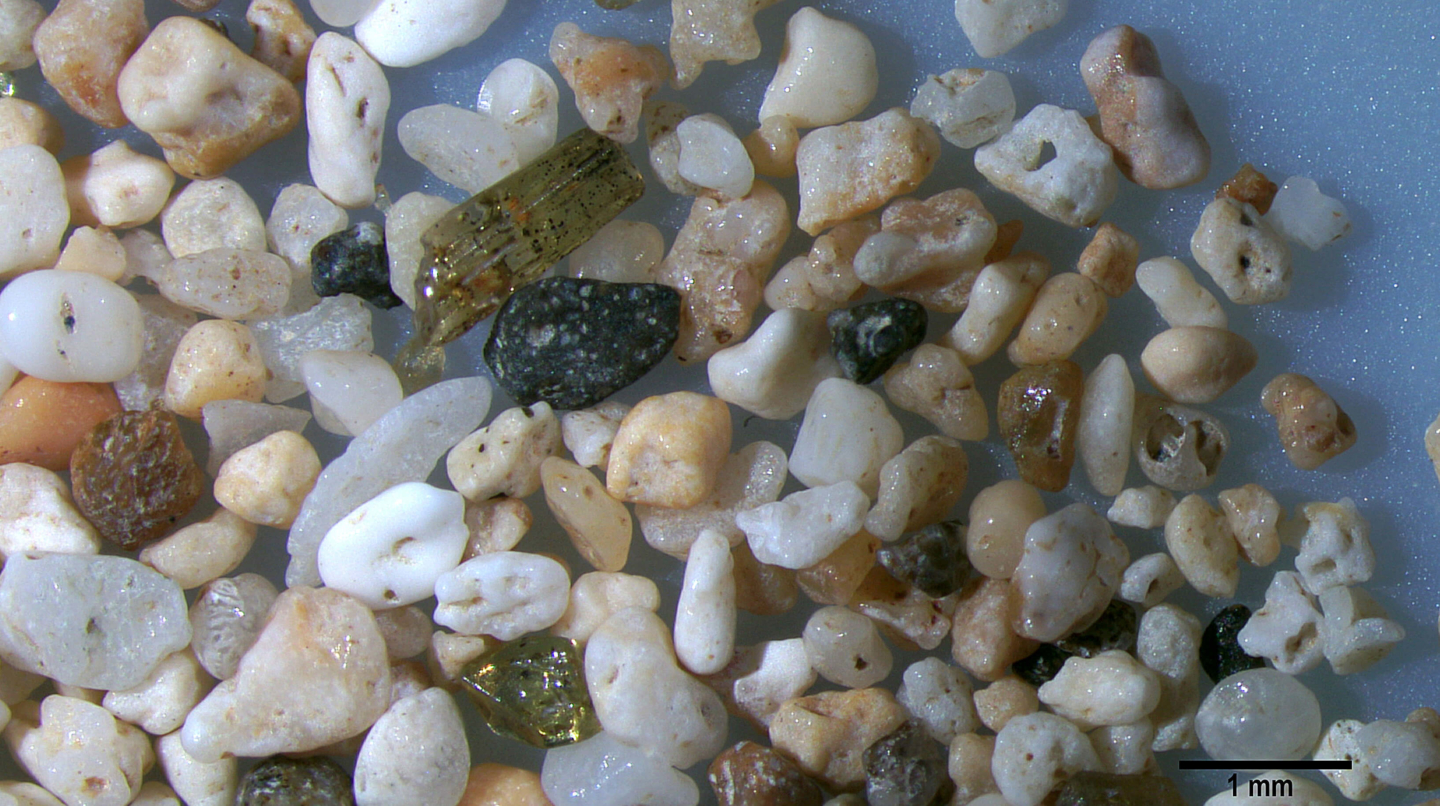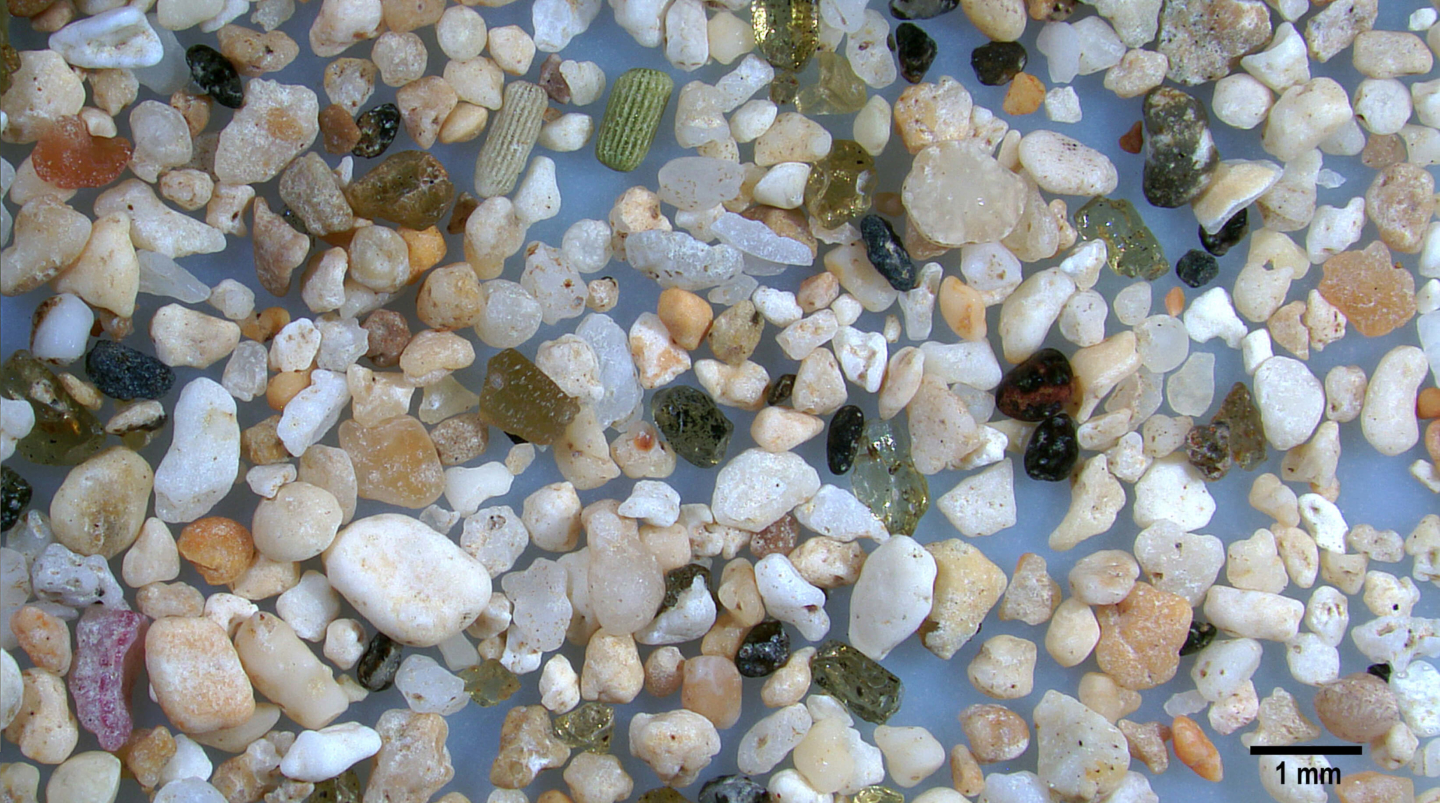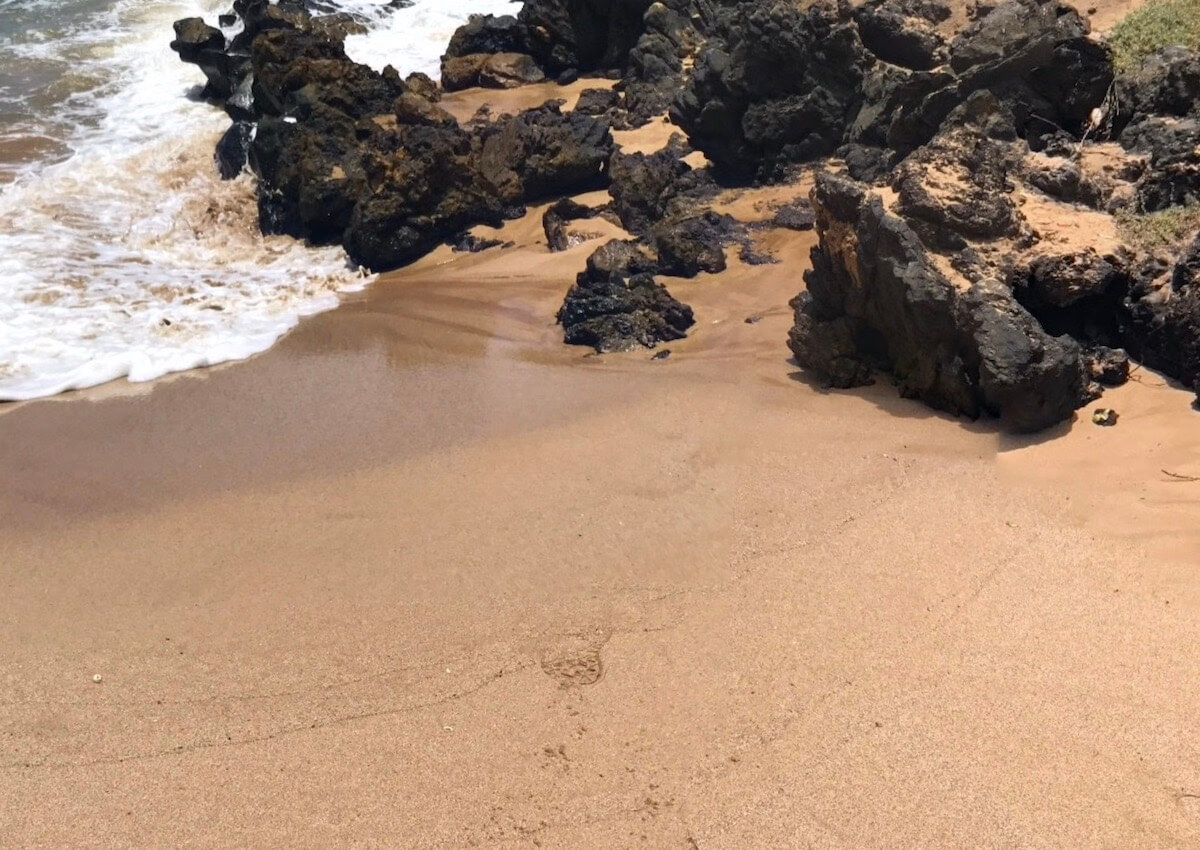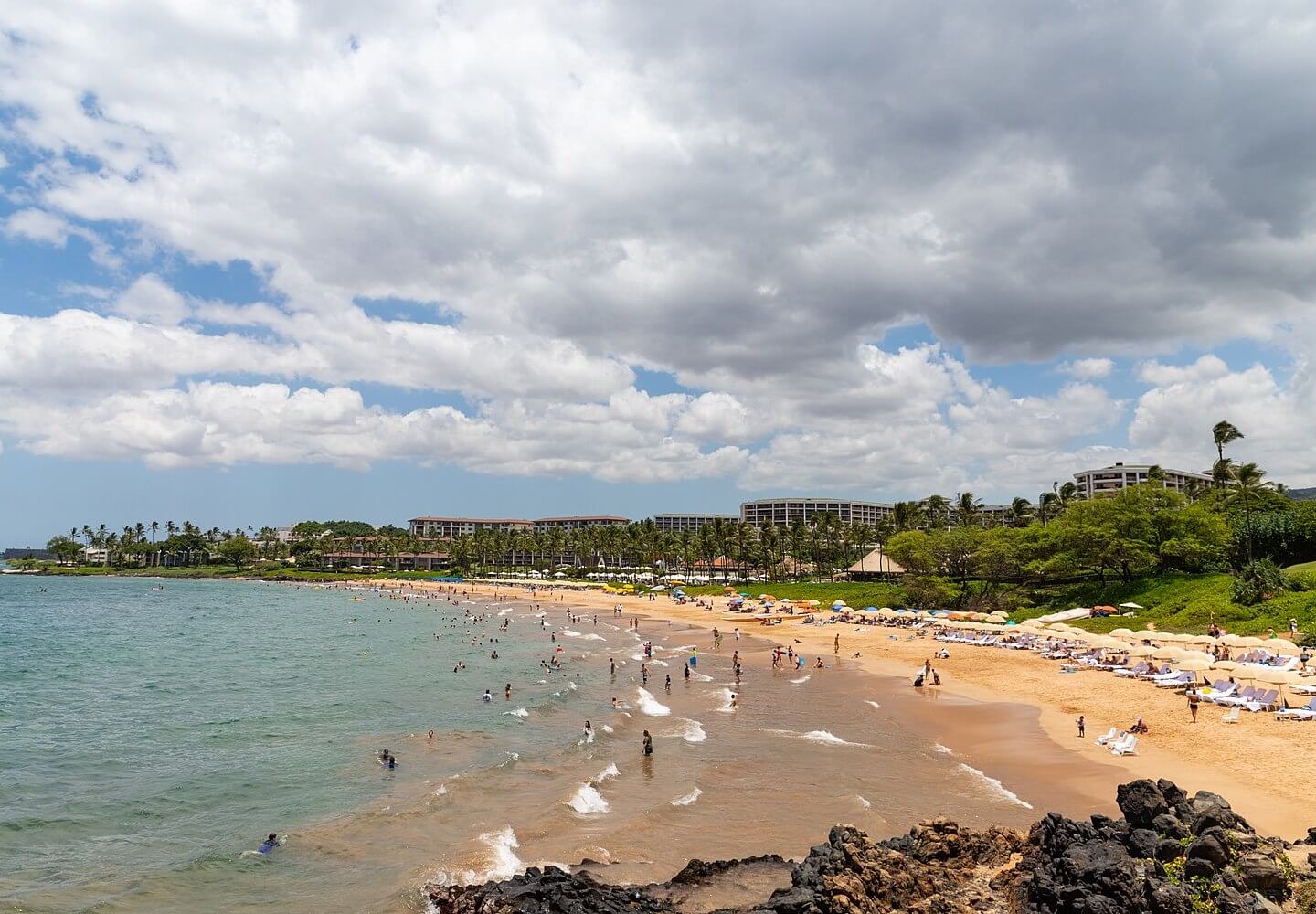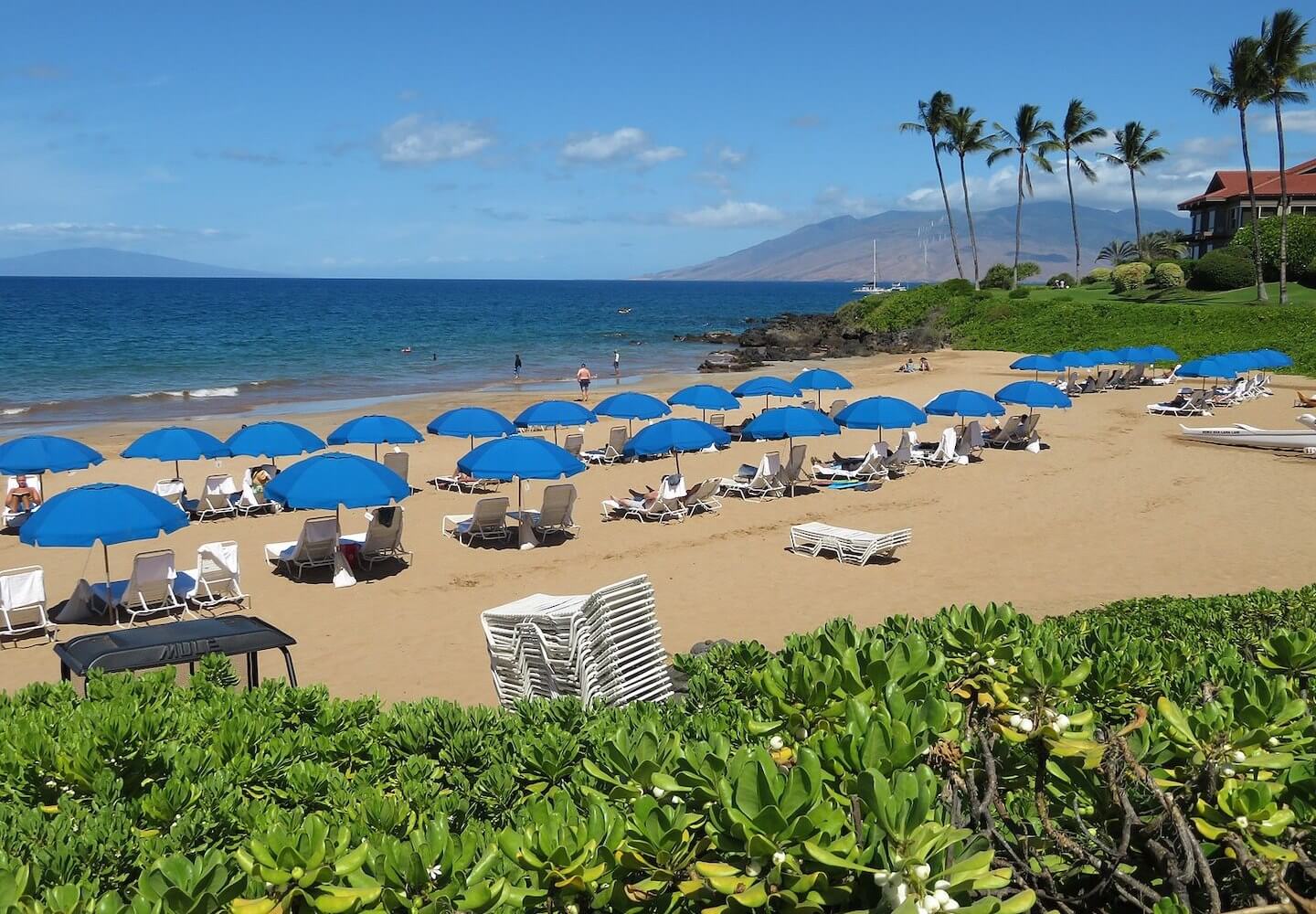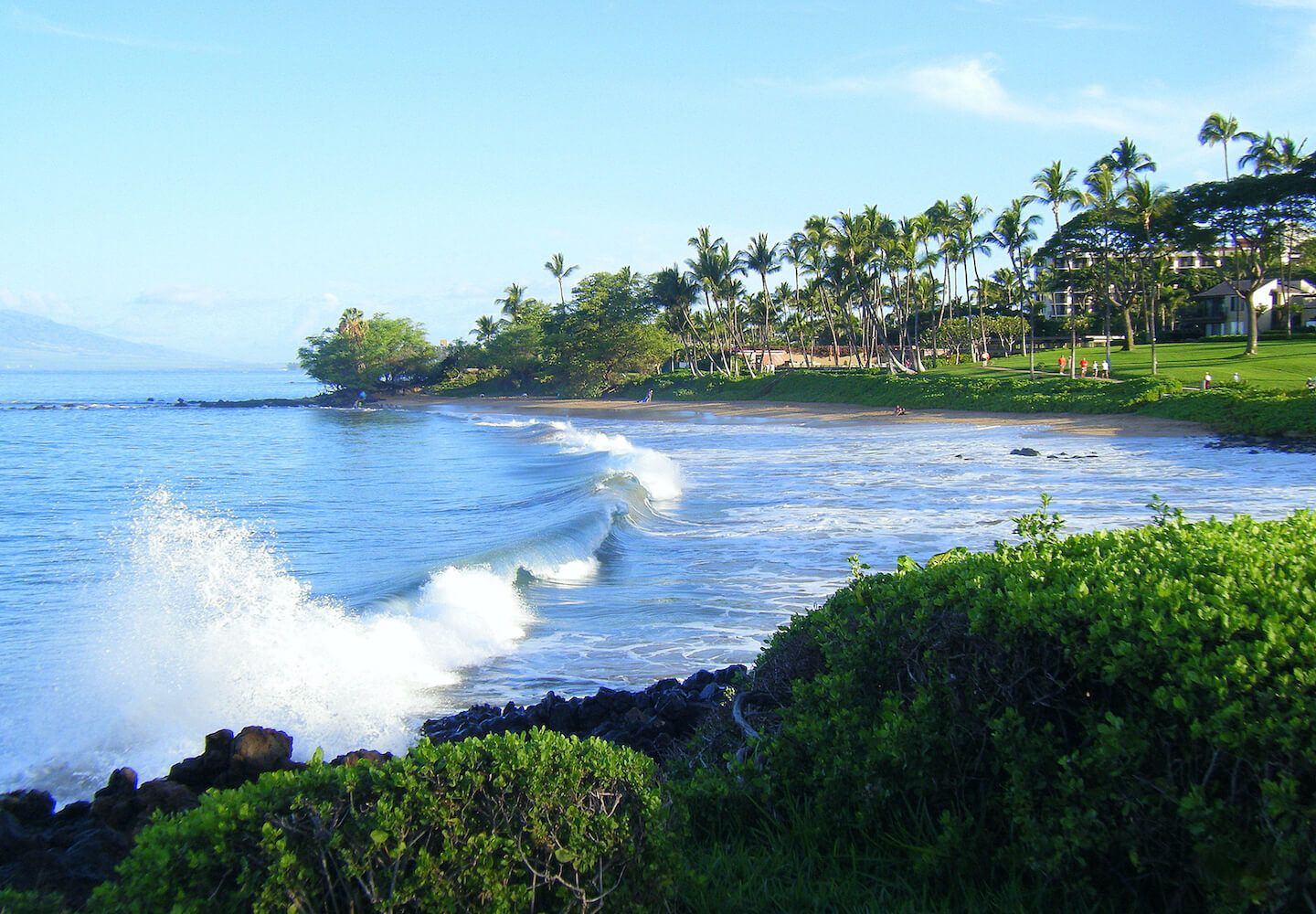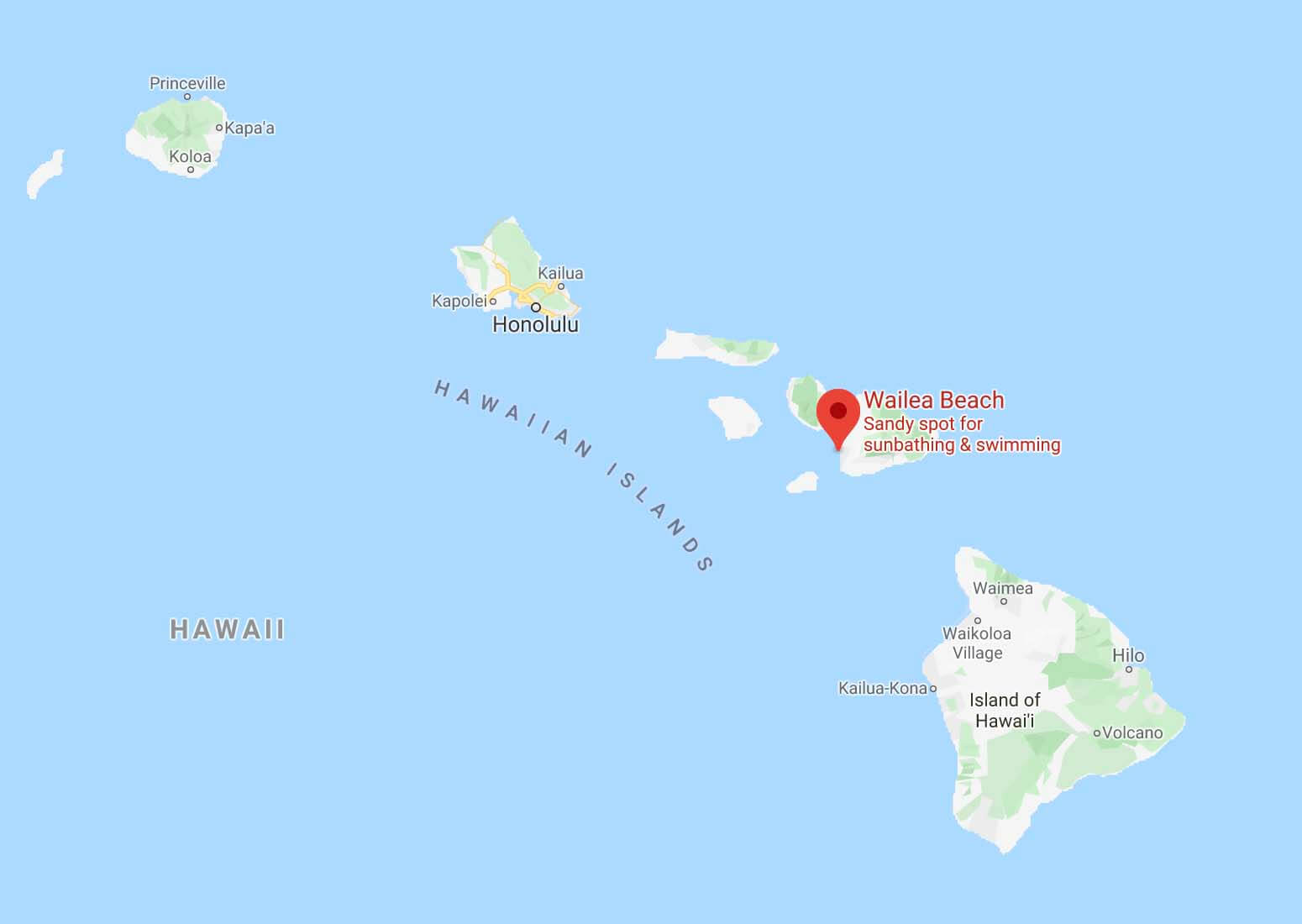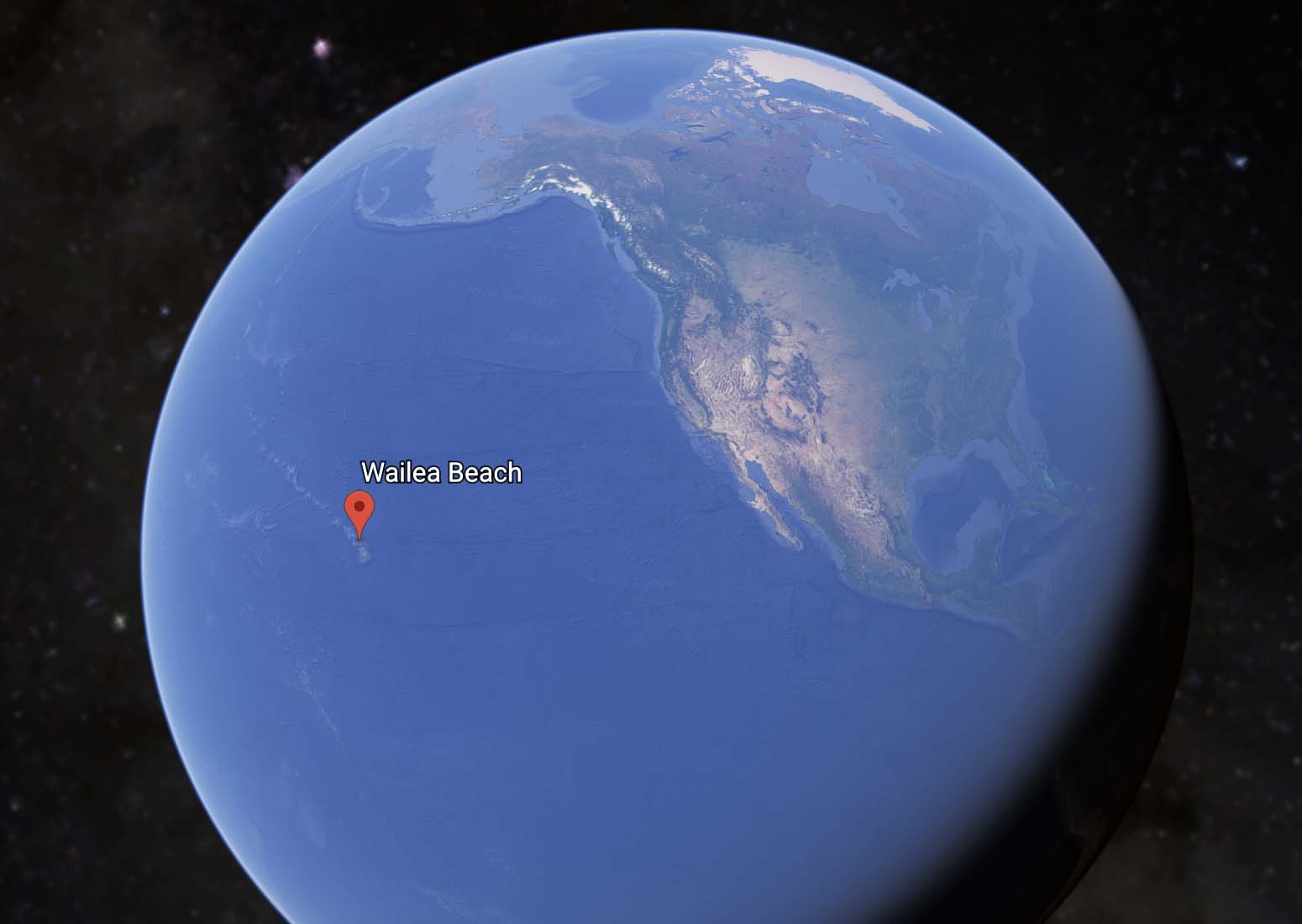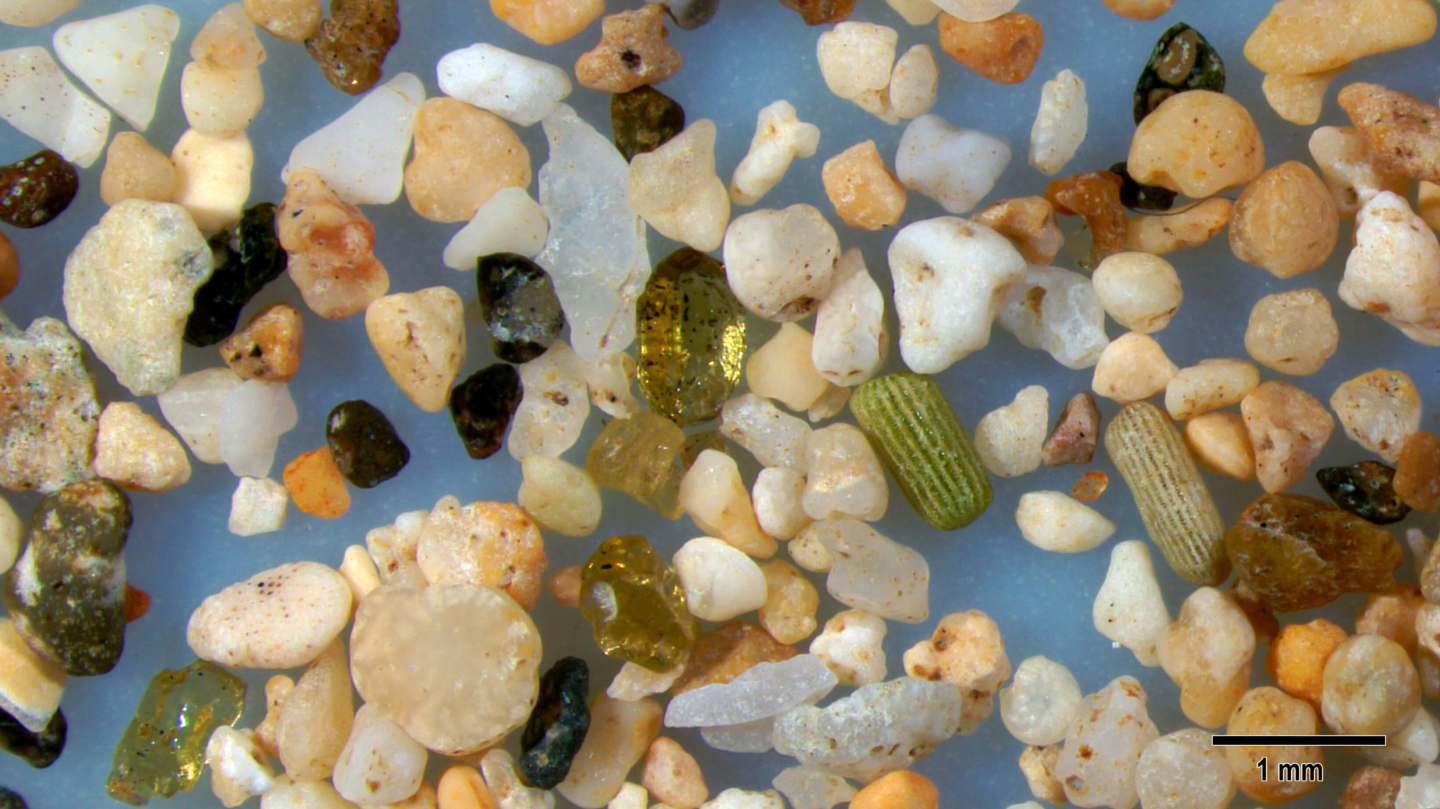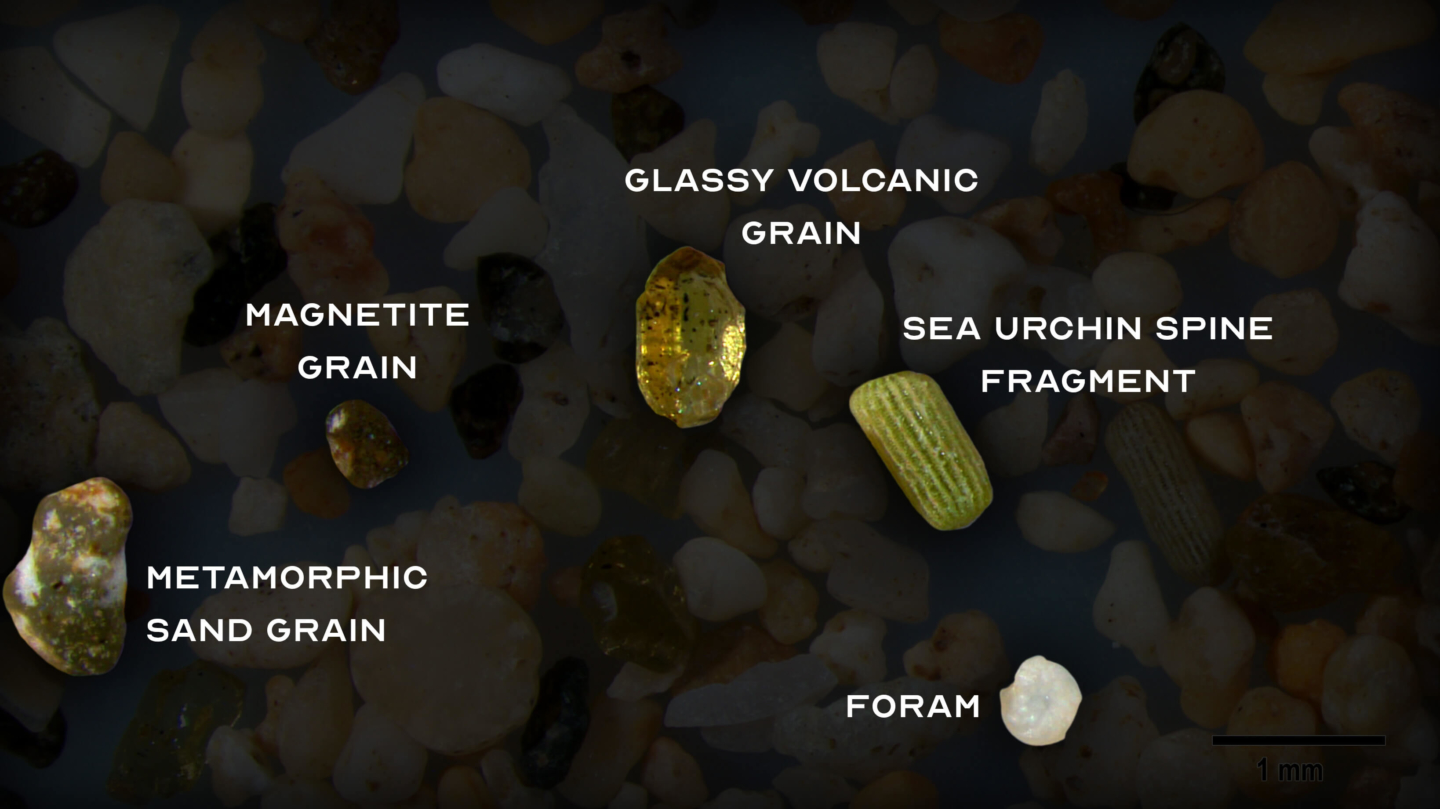The Wailea Beach area is a valley-like isthmus originally formed by sandy erosional deposits between two volcanoes over a period of millions of years. Original volcanic sand has gradually been covered by biogenic sand grains so that today Wailea Beach sand is a mixture of primarily biogenic marine sand grains with occasional sharp-edged yellowish-green glassy grains of volcanic origin.
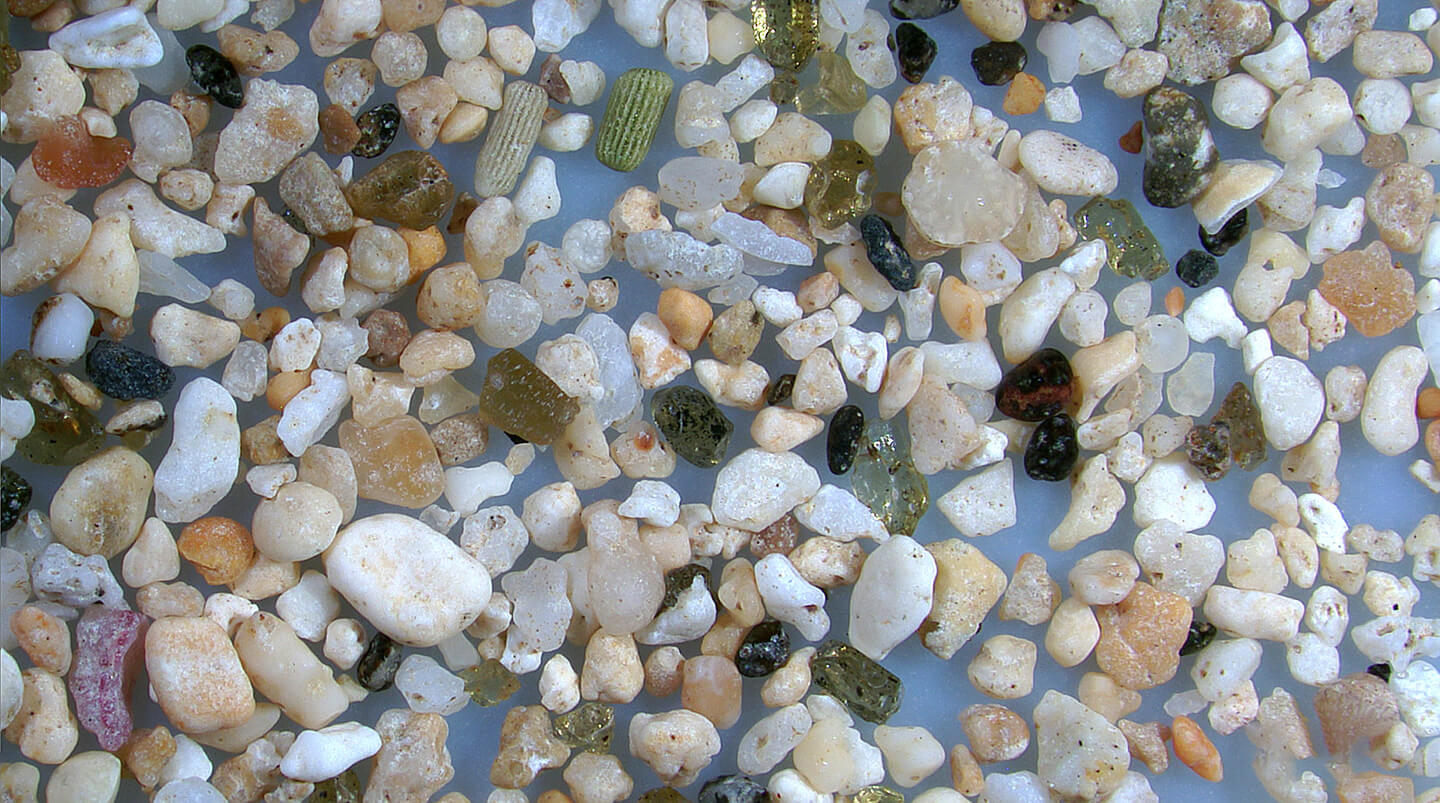
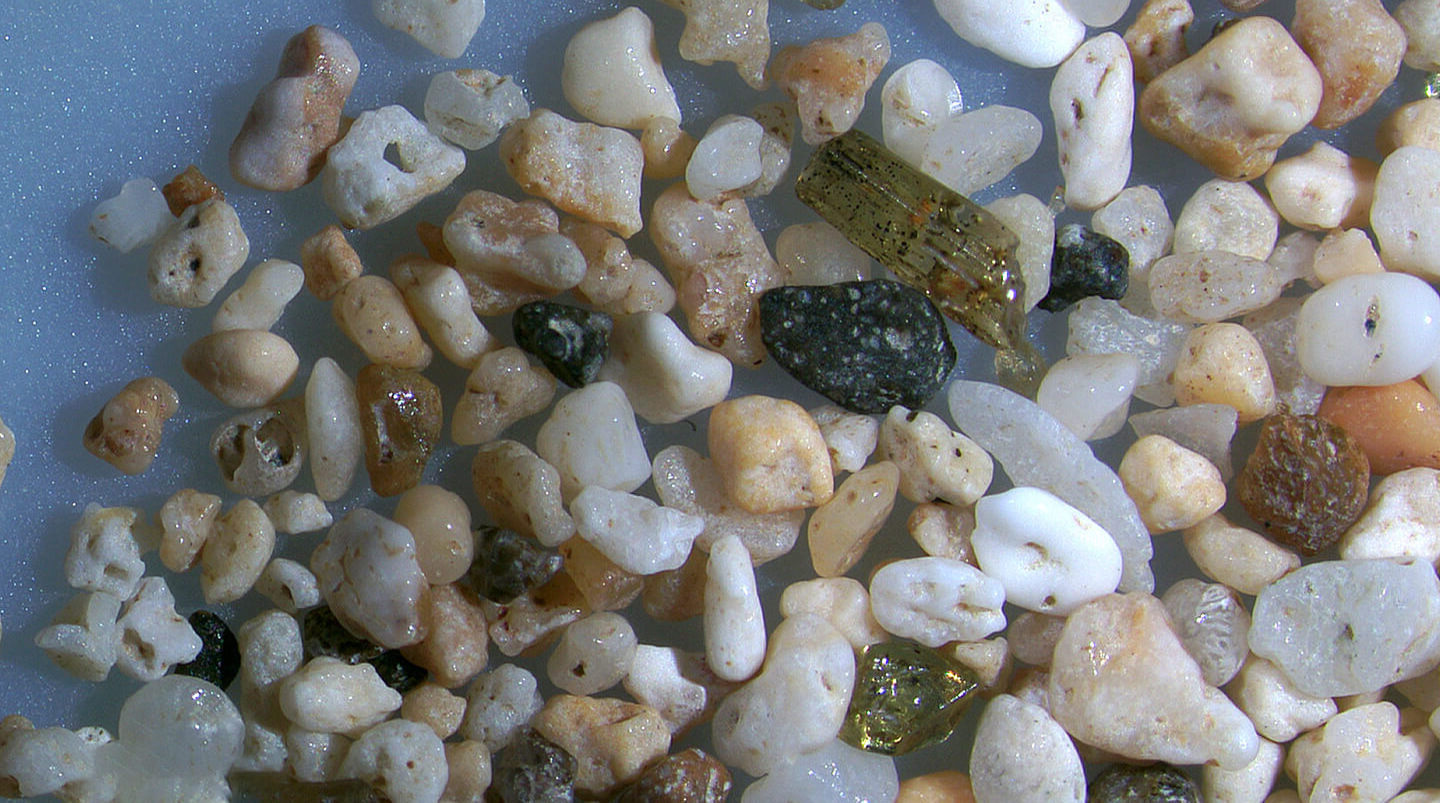
Geographic Overview
Along the Wailea coast are small crescent shaped tawny sand beaches interspersed with low volcanic rocky points formed between two volcanoes during shield building as lava flowed mostly from the East Maui volcano that has been extinct for the last 200 years. The dormant but not extinct Haleakala volcano to the east of Wailea last erupted in the mid-1600s with shield building to the southwest of Wailea. The beaches of Wailea are known for high 10 to 15 foot waves and strong winds that are especially damaging during hurricanes.
Sand Gallery
Samples of beach sand from Wailea Beach photographed under a microscope at various magnifications. Notice the scale in the lower right corner of the images. The sand is composed of a mixture of biogenic and volcanic grains. The biogenic marine grains are smoothly rounded as a result of the famous strong winds and waves of Maui. Marine grains include bits of sea urchin spines with longitudinal grooves, rounded foraminifera tests of single-cell organisms (forams), white fragments of smoothed coral, an occasional colorful fragment of a bivalve, and tiny black magnetite grains.
